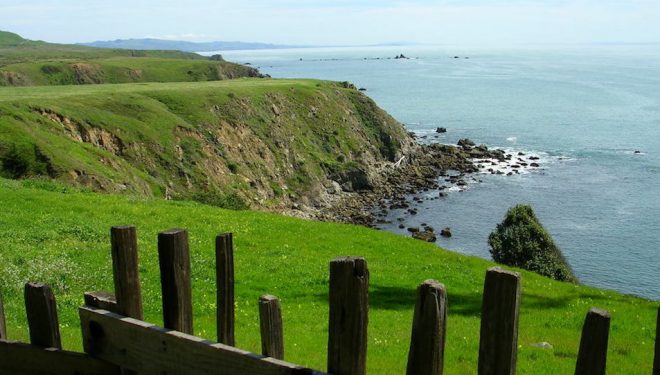
On February 19, 2020, the Oregon Department of Land Conservation and Development (DLCD) issued a negative determination regarding the proposed Jordan Cove Energy Project and Pacific Connector Gas Pipeline’s (Project) consistency with the Oregon Coastal Management Program, which implements the Coastal Zone Management Act.
DLCD’s decision represents the latest in a series of permit challenges the Project has faced. For example, in late 2018 we covered Coos Waterkeeper v. Port of Coos Bay Oregon, 363 Or. 354 (2018), in which the Oregon Supreme Court upheld the Oregon Department of State Lands’ issuance of a removal fill permit to the Port of Coos Bay for the construction of the marine terminal associated with the Project. In July 2019, we covered the Oregon Department of Environmental Quality’s (DEQ) denial of water quality certification for the Project.
The Project Overview
The Project proponent is Pembina Pipeline Corp., a Canadian energy company. The proposed export terminal would be located on the North Spit of Coos Bay in Coos County, Oregon. Facilities would include a slip and access channel, modifications to the federal navigational channel, a marine terminal, a natural gas conditioning and liquefaction facility, operations buildings, and wetland mitigation sites. The terminal would be served by the proposed 229-mile Pacific Connector pipeline that would connect to existing interconnections in Klamath County, Oregon. The pipeline could transport up to 1.2 billion cubic feet of natural gas per day. The Project is expected to cost $10 billion and could enter service as early as 2025.
The Coastal Zone Management Act
Under the federal Coastal Zone Management Act of 1972 (CZMA), 16 U.S.C. § 1451 et seq., states develop Coastal Management Programs to manage their coastal zones. The CZMA requires that:
“. . .[e]ach Federal agency activity within or outside the coastal zone that affects any land or water use or natural resource of the coastal zone…be carried out in a manner which is consistent to the maximum extent practicable with the enforceable policies of approved State management programs.” 16 U.S.C. § 1456(c)(1)(A).
The process by which states review federal agency activities within the coastal zone is referred to as “consistency review.”
Oregon’s Coastal Management Plan
Oregon’s Coastal Management Plan (OCMP) was federally approved in 1977. DLCD is Oregon’s designated coastal management agency and is responsible for implementing the OCMP and conducting consistency reviews.
To be consistent with the OCMP, a proposed project must comply with enforceable policies contained in: 1) the statewide land use planning goals; 2) the applicable acknowledged city or county comprehensive plans and land use regulations; and 3) selected state authorities, such as those governing removal-fill, water quality, and fish and wildlife protections.
DLCD’s Coastal Effects Analysis
DLCD’s decision begins with the agency’s coastal effects analysis. Coastal effects are any reasonably foreseeable direct or indirect effects on any coastal use or resource resulting from a federal agency activity or federal license or permit activity. DLCD’s coastal effects analysis covers five categories: natural resources, recreation and access, cultural resources, aesthetic resources, and economic resources. DLCD surveyed numerous adverse effects of the Project on these resources, including:
- Dredging approximately 18 million cubic yards of material from the estuary would increase turbidity and expose contaminated sediments;
- Disturbance to marine mammals such as sea lions and seals;
- Habitat impacts on threatened species like the western snowy plover, marbled murrelet, and northern spotted owl;
- Air pollution caused by transport, storage, and liquification of natural gas
- Impacts to public water recreation;
- Impacts to tribal food sources and culturally significant landscapes;
- Light and noise pollution.
After analyzing these effects and considering public comments, DLCD concluded “that the coastal adverse effects from the project will be significant and undermine the vision set forth by the OCMP.”
DLCD’s Enforceable Policies Analysis
DLCD then explained why the proposed Project and its coastal effects are inconsistent with specific enforceable policies listed the OCMP. A key reason for DLCD’s decision was that Pembina has not obtained, and in some cases, has not applied for, required state permits and authorizations. For example, DEQ denied Pembina’s application for state water quality certification that is required by the federal Clean Water Act. DLCD administrative rules provide that issued state permits or authorizations are the only acceptable evidence demonstrating consistency with the enforceable policies that the permit or authorization covers. Without a final permit or authorization, the Project cannot be shown to be consistent with the OCMP.
Pembina may yet prevail. The U.S. Secretary of Commerce has authority to overturn a state’s denial of coastal zone permit, and Pembina is awaiting a decision on its request to the Secretary.
Conclusion and Implications
The fate of the Project remains unclear. Despite Pembima’s failure to secure multiple required state permits and authorizations, the Federal Energy Regulatory Commission (FERC) on March 19 conditionally approved the Project by a vote of 2-1. FERC’s decision authorizes Pembina to initiate the process of eminent domain for roughly 90 private landowners in Southern Oregon who have declined to sell Pembina easements for the Pacific Connector pipeline to cross their property. Oregon Governor Kate Brown vowed to “use every available tool to prevent” Pembina from proceeding with eminent domain until it secures “every single required permit from state and local agencies.”
(Alexa Shasteen)




